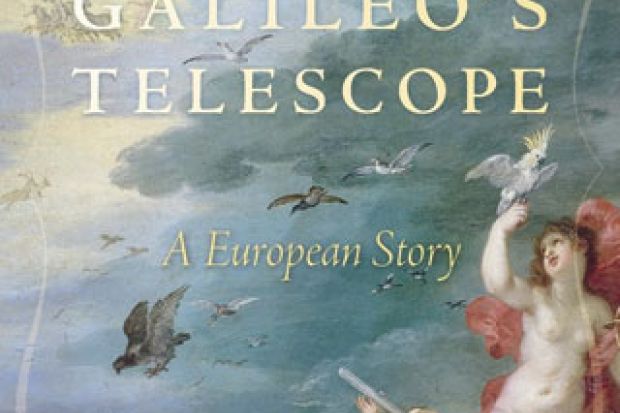It is common knowledge today that Galileo Galilei turned the world upside down by pointing his new telescope towards the sky. By discovering the phases of Venus and the moons of Jupiter, he dislodged the Earth from its apparent position at the centre of the universe; in observing the Moon’s craters and the Sun’s spots he uncovered their “blemishes”, stripping them of their role as icons of celestial perfection. In other words, Galileo’s discoveries not only challenged common sense but also undermined a thousand years of Christian tradition in which physical cosmography provided an instructive spiritual model.
What is less commonly known is how these belief-shattering findings were received at the time – and how they (and the technology that made them possible) spread through Europe and beyond. This is the focus of Galileo’s Telescope. Using letters, paintings and other contemporary documents, Massimo Bucciantini, Michele Camerota and Franco Giudice show, in meticulous detail, that the dissemination of Galileo’s discoveries was by no means linear and straightforward.
For a start, many Christian scholars were excited rather than alarmed by Galileo’s new discoveries, which he published in 1610 in his book Sidereus Nuncius (Starry Messenger). They were certainly excited by the telescope itself: in the early 1600s it became fashionable to use a spyglass to observe distant landscapes, and then – when better telescopes became more widely available, thanks largely to Galileo himself – to stargaze. In exploring this fashion, the authors explore both the political and religious power of the telescope.
They also show how carefully Galileo planned his political campaign to demonstrate and defend his discoveries before Italy’s most powerful princes, cardinals and even the Pope. They recount how leading scholars reacted to his discoveries, and how difficult it was to make suitable telescopes with which to corroborate his findings. And they show there was more to it than simply observing the sky. Others had done so, too, but it was Galileo’s interpretation of what he saw that was so controversial and significant.
Apparently pitched at both a scholarly and a semi-popular audience, Galileo’s Telescope is written in accessible language and generously illustrated; yet its specific focus is perhaps of limited interest to the general reader, and those used to a linear narrative may find it difficult to follow its device of retelling much of the story from the point of view of different places in different chapters. But the authors aim to show there is no single history of the telescope, and their device highlights the simultaneity of responses to Galileo’s discoveries in Florence, Venice, Rome, Milan, France, England and Prague; it is a creative solution that rewards careful reading and scholarly attention. Documents are examined painstakingly in order to date events and to uncover opinions in the various locations.
In particular, the authors show just when, where and why Galileo met opposition after his 1610 announcement. It would come to a head in 1616, when Copernicus’ 1543 heliocentric theory – of which Galileo had become the new champion – was formally banned by the Catholic Church. Galileo’s Telescope does not cover the well-known details of his subsequent downfall, but it ends with a poignant reminder: after Galileo died under house arrest in 1642, his tomb would remain hidden for nearly a hundred years.
Galileo’s Telescope: A European Story
By Massimo Bucciantini, Michele Camerota and Franco Giudice
Translated by Catherine Bolton
Harvard University Press, 352pp, £24.95
ISBN 9780674736917
Published 26 March 2015
Register to continue
Why register?
- Registration is free and only takes a moment
- Once registered, you can read 3 articles a month
- Sign up for our newsletter
Subscribe
Or subscribe for unlimited access to:
- Unlimited access to news, views, insights & reviews
- Digital editions
- Digital access to THE’s university and college rankings analysis
Already registered or a current subscriber? Login





